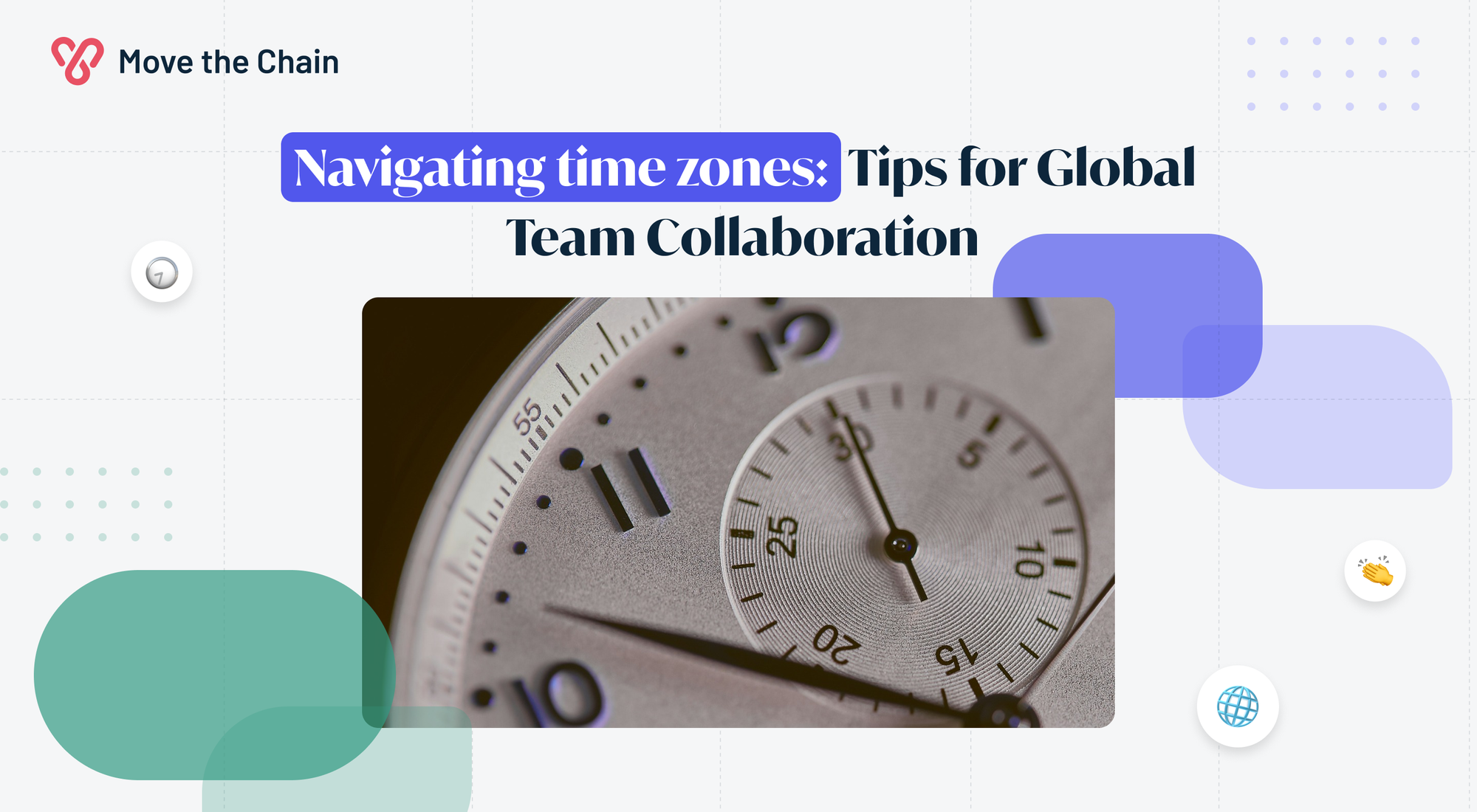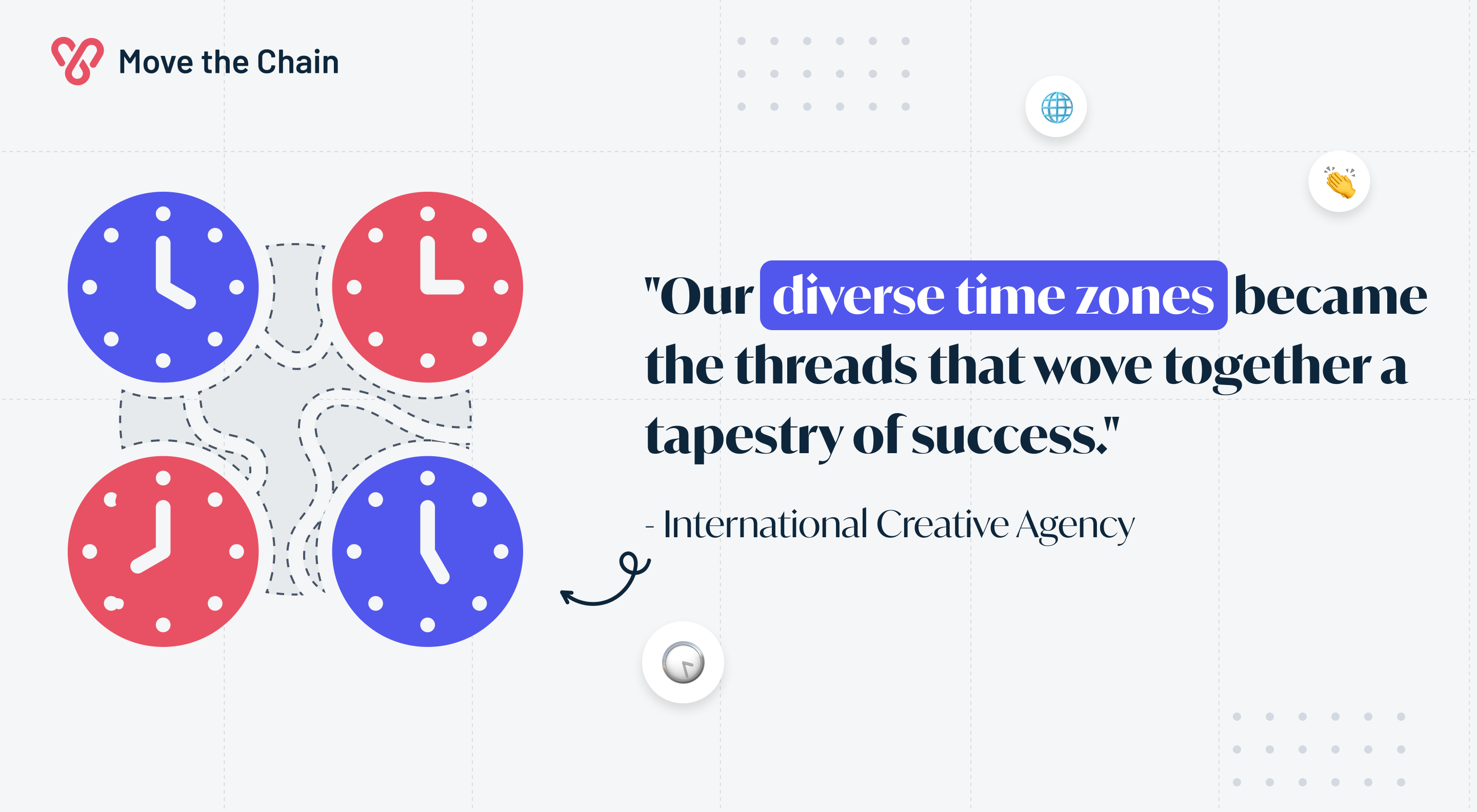Navigating Time Zones: Tips for Global Team Collaboration

Introduction:
In today's interconnected world, businesses are expanding beyond borders, bringing together teams from different corners of the globe. While this global collaboration offers diverse perspectives and expertise, it also introduces the challenge of managing work across various time zones. Navigating time zones effectively is crucial for maintaining seamless communication, productivity, and overall team success. In this article, we'll explore practical tips to foster effective collaboration within global teams, regardless of the geographical distances.
Establish Clear Communication Channels:
Start by setting up reliable communication channels that accommodate different time zones. Utilize instant messaging platforms, such as Slack or Microsoft Teams, for real-time communication. Email can be effective for asynchronous communication, allowing team members to respond when it suits their local working hours.
Implement a Unified Calendar System:
Create a shared calendar system that displays the working hours of team members in different time zones. Tools like Google Calendar allow users to set their time zone preferences, making it easier to schedule meetings and deadlines that align with everyone's availability.
Schedule Meetings Strategically:
When organizing meetings, consider everyone's time zones to find a suitable compromise. Rotating meeting times can distribute the inconvenience across the team. Additionally, leverage tools like Doodle or World Time Buddy to find optimal meeting slots that accommodate various schedules.
Embrace Flexibility and Autonomy:
Encourage a culture of flexibility and autonomy within the team. Allow team members to have control over their work hours whenever possible, fostering a sense of ownership and reducing the stress of adhering to a rigid schedule dictated by a centralized time zone.

Document and Record:
Recognize that not everyone can attend every meeting in real-time. Record important meetings and share detailed minutes to ensure that all team members, regardless of their time zone, have access to essential information. This practice promotes transparency and inclusion.
Utilize Project Management Tools:
Invest in project management tools that facilitate collaboration and keep everyone on the same page. Platforms like Asana, Trello, or Jira enable teams to track progress, assign tasks, and share updates, creating a centralized hub for collaboration irrespective of time zones.
Build a Global Team Culture:
Foster a sense of unity within the team by celebrating diverse cultural perspectives. Encourage team members to share their local customs, holidays, or interesting facts about their region. This not only enhances team cohesion but also promotes understanding and empathy.
Set Clear Expectations:
Establish clear expectations regarding response times and availability. Communicate agreed-upon response windows for emails or messages to manage expectations and avoid unnecessary delays or misunderstandings.
Case Study 1: The 24-Hour Productivity Cycle
Imagine a team spread across three continents: North America, Europe, and Asia. Instead of viewing time zones as a hindrance, this team embraced the 24-hour cycle to their advantage. By strategically scheduling tasks and meetings to overlap with different team members' work hours, they transformed the challenge into a powerful productivity engine. As one team member finishes their workday, another seamlessly picks up the baton, creating a continuous workflow that defies geographical constraints.
"Time zones are not barriers; they are opportunities to create a continuous flow of innovation." - Team Lead, Global Tech Solutions
Case Study 2: The Time-Boxed Sprint
In a multinational project, a team faced the dilemma of coordinating a sprint planning meeting that accommodated participants from Australia, Europe, and the Americas. Instead of finding a compromise that left everyone slightly dissatisfied, they implemented a time-boxed sprint model. Each team member contributed during their local working hours, ensuring that the project progressed round the clock. The result? A beautifully orchestrated symphony of collaboration that delivered exceptional results.
"Our diverse time zones became the threads that wove together a tapestry of success." - Project Manager, International Creative Agency
Conclusion:
Navigating time zones in a global team requires a thoughtful and strategic approach. By implementing the tips mentioned above, organizations can not only overcome the challenges posed by different time zones but also leverage the strengths and diversity that come with a globally distributed team. Effective collaboration across borders is not just about overcoming geographical distances but about embracing the unique advantages that a global team brings to the table.
